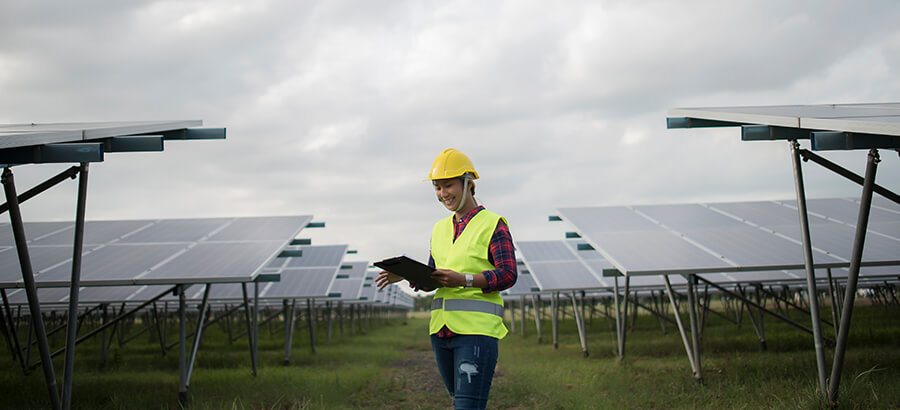This year marks the 50th anniversary of Earth Day, the world’s largest environmental movement to drive transformative change for people and planet. Over the last few weeks, social media and traditional media have been abuzz with stories around how the lockdown has had a positive impact on the environment. In China, carbon emissions were reduced by 18 percent between early February and mid-March due to falls in coal consumption and industrial output, according to calculations first published by climate science and policy website CarbonBrief.
Although air pollution has decreased, experts say the effects are only temporary. The question is how do we all contribute to ongoing environmental sustainability in a post COVID-19 world?
With a shared vision for ongoing sustainability, manufacturers can make a long-term impact by improving the efficiency of equipment and processes, lowering energy and water consumption, increasing the use of renewables, reducing waste, emissions and packaging, as well as using fewer raw materials. The manufacturing sector within APAC could look into a number of renewable energy options to make that a reality:
Wind and Solar
Wind and solar energy are becoming more cost-competitive and this means the transition to clean renewable energies is either in progress or planned by heavy industries. Now that renewables account for an ever-rising share of Australia’s power mix, supplying about 20 percent of demand, the transition is already in full swing. Australia has no excuse really as we have the highest average solar radiation per square metre of any continent, so manufacturers, who usually have extensive roof space, can harness the power of the greatest free energy source available – the sun.
B&R Enclosures, an electrical enclosures, racks and cabinet manufacturer and one our customers, has just announced their piloted project at their Brisbane facility by installing a solar energy system whilst using B&R product solutions. It has provided them with a range of benefits including significant cost savings and allowed them to be more environmentally responsible.
Water Harvesting
It’s not just the sun or wind that manufacturers need to capture and use, as there has been an increasing uptake of smart, water efficiency solutions, including rainwater harvesting, for non-potable uses. This offers manufacturers a viable alternative to using vast amounts of valuable and expensive drinking water in their production processes and for sewerage. Many sustainability-focused manufacturers have seen the sense in capturing this free resource as well as introducing ways to be more efficient in the use of water with the aim of lowering their consumption.
Sustainable packaging is good for profits as well as the planet
There has been a huge generational shift in attitude towards one-use plastic, and consumers are now choosing to buy from brands they believe are doing social or environmental good.
The reduction or removal of both paper and plastic in manufacturing, packaging and distribution and the recycling of these resources after use is essential and is already happening. Some manufacturers are yet to sufficiently prioritise sustainability and circularity when considering design, use and disposal of packaging, with a lot of packaging still single-use and non-recyclable.
Some of the smaller manufacturers are now collaborating with larger ones to “close the plastic waste loop”. CSR collects its disused shrink-wrapped plastic and sends it to Plastic Forests, who have used it to produce air conditioning mounting blocks, which can also be used to dampen vibration on machinery such as compressors.
Paperless manufacturing
The paperless office has been a manufacturing objective sought for years. Saving costs and the environment are achievable but going paperless will take more than throwing out the office memos and printing less. Paperless manufacturing is shifting the way a manufacturing plant operates. Many of our manufacturing and distribution clients are using their ERP system to reduce manual processes and have moved to a paperless industrial environment, including B&R Enclosures, which has a predominantly paperless shop floor and Independent Liquor Group, which is integrating its ERP with its paperless warehousing system.
Grid-Scale Batteries
As the industry grapples with the transition to renewables, batteries will be pivotal to providing capacity when the sun isn’t shining, when the wind isn’t blowing, and the market demand requires it.
One of Australia’s biggest batteries will be built by independent power supplier Vena Energy in Wandoan, Queensland within the next 18 months under a deal involving energy giant AGL, which will strengthen the grid’s ability to shift from coal to renewable power generation by smoothing out the intermittent nature of wind and solar power.
Although the grid-scale battery market is in its infancy, batteries are considered to be crucial in the nation’s move away from heavy-emitting coal-fired power stations, due to their capacity to store electricity generated from renewable sources and dispense it at a later time when conditions for renewables are unfavourable.
What does this mean?
Moving forward, manufacturers need to make a commitment to do more with less by building sustainable practices into everyday operations. ERP provides the solutions, processes and tools to assist you to manage your data and gain insights into your business. By having authority over business processes, manufacturers can contribute to the green economy by processing and accelerating raw material intake efficiently.






